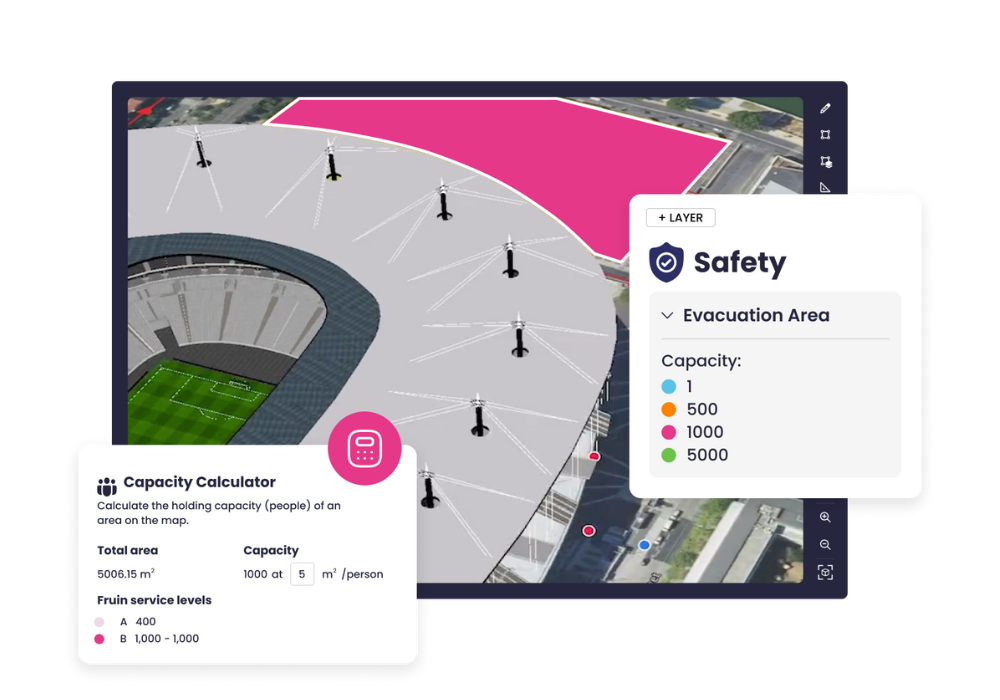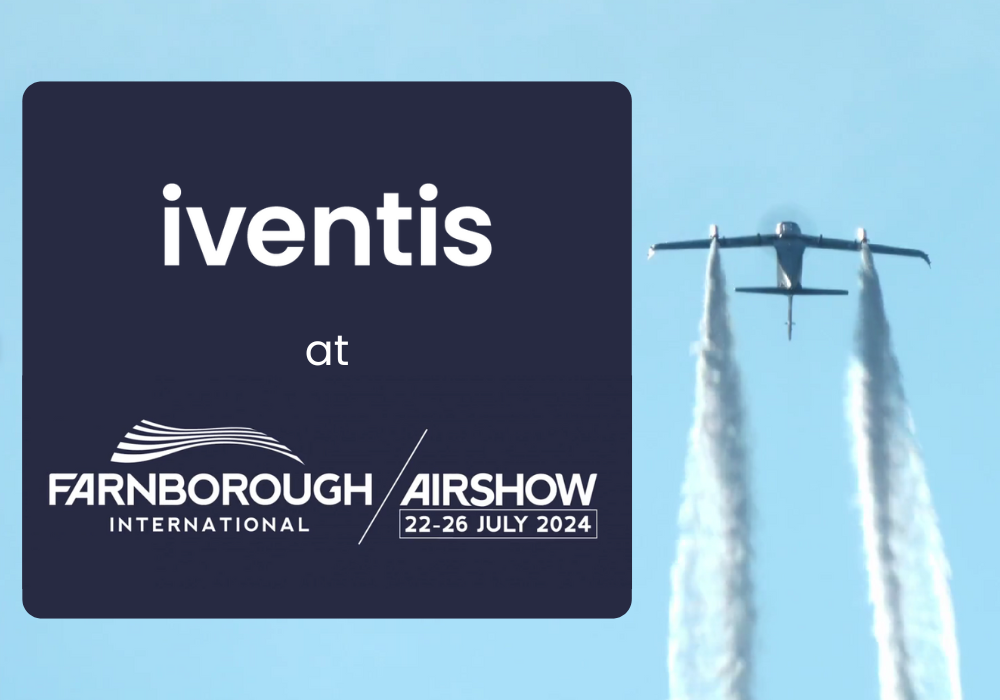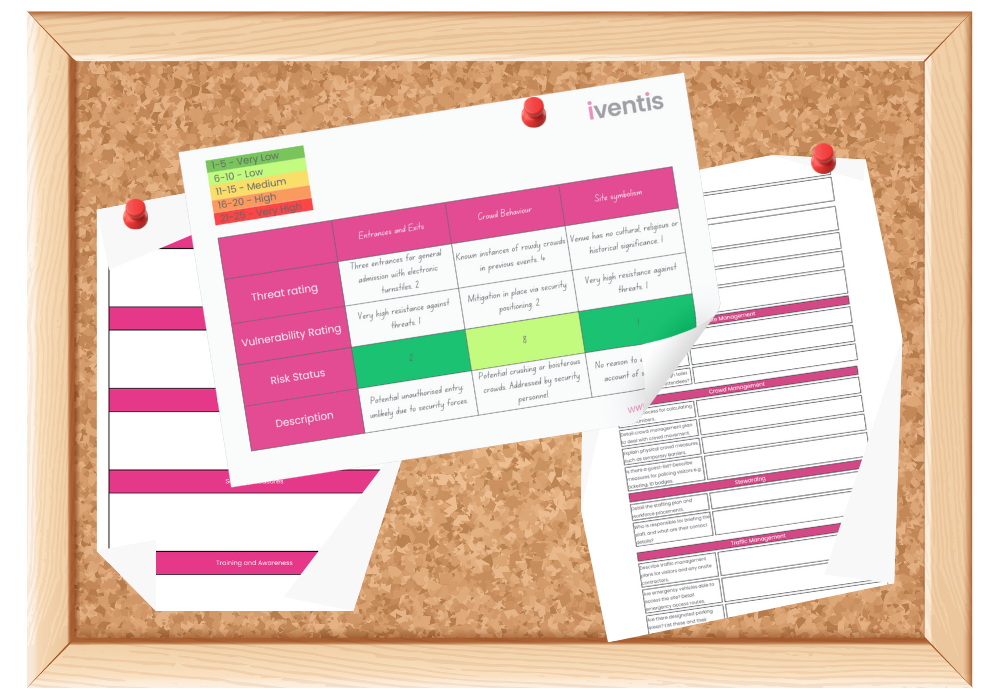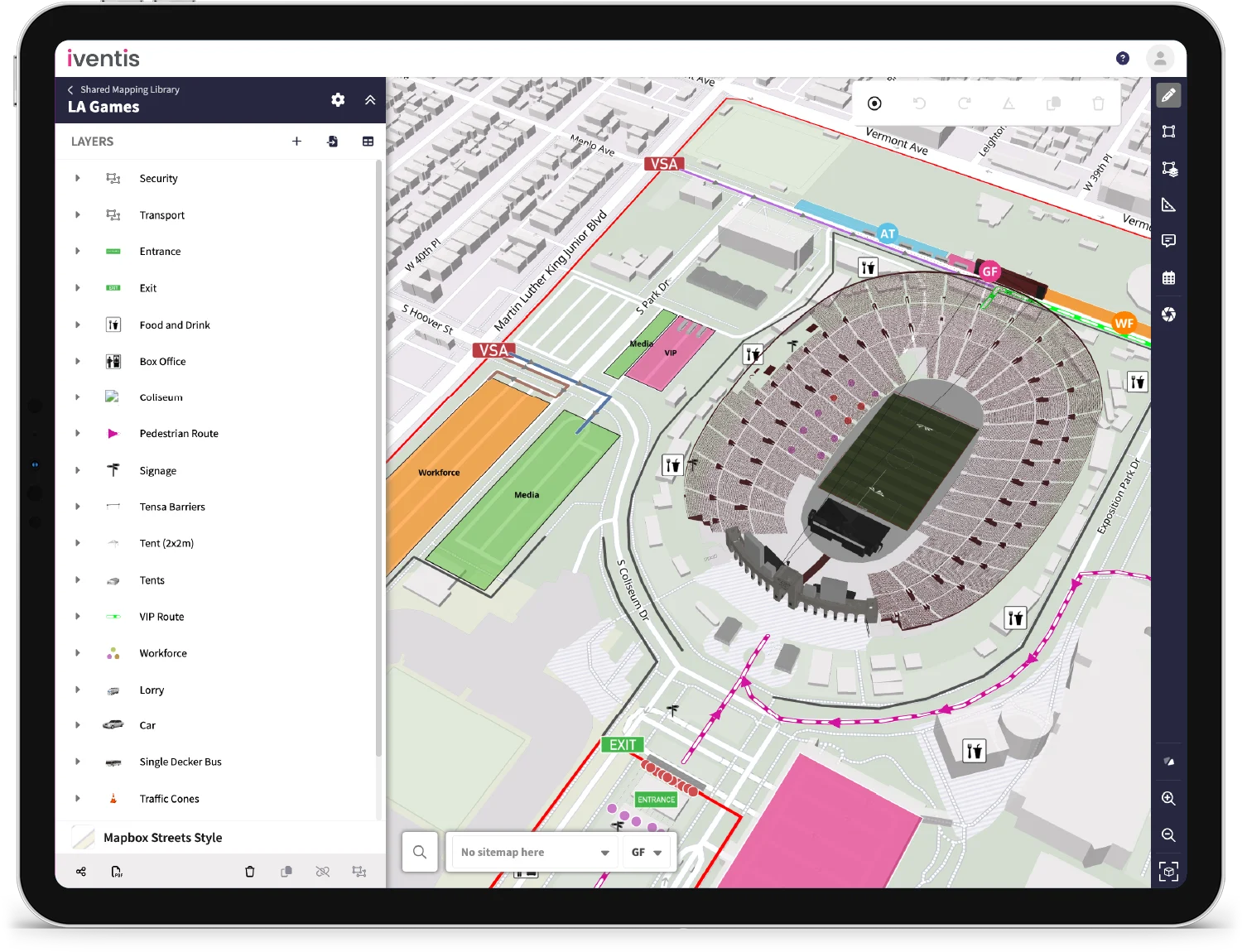Over the last 20 years, crowd simulation and modelling has become an increasingly important part of event planning. By running simulations and performing scientific crowd analysis, event organisers can find ways to reduce the risks associated with overcrowding and poor visitor experience such as long queues and lengthy delays.
Crowd modelling software can provide a more immersive event planning tool. It can generate visual animations which can be used to increase engagement with stakeholders, staff and participants through 2D and 3D imagery.
As useful as such crowd simulations are, they’re usually expensive and time consuming to produce. The software itself can be very costly, and needs to be set up, run and analysed by specialists.
As a result, typically only the largest events are able make use of the technology, where the budgets are higher and there are more risks to justify the cost.
Even then, due to the time and expense, the software is usually only used to test a few scenarios – such as ‘worst case’ situations like evacuations. Simulations are based on a set of highly variable assumptions on crowd behaviour, and subtle changes can have a big impact on the result.
As a result, crowd modelling experts will be careful to caveat the assumptions used to develop the simulation, leaving planners with many “what if” questions. For example, “what would happen if this exit was closed?”, or “if this route was used?”. It often leads to situations where simulations create more questions than answers. It can be frustrating when such accessible and useful outputs cannot be produced quickly to answer these questions.
The answer is to use ‘static modelling’, where calculations are performed in spreadsheets or other methods, rather than a full, dynamic, animated model. This can help identify the greatest risks, and identify scenarios where dynamic models would be more beneficial. The downside of static modelling is the outputs are less accessible than dynamic modelling.
In some environments, the underlying assumptions are so variable that simulations act as little more than a visualisation of a space or specific scenario.
In many cases, quick crowd analysis and simple visualisations can be just as powerful and accurate as full simulations but with dramatically reduced costs and time scales. It can also bring ‘static’ calculations and modelling to life, helping explain the meaning of calculations to planners and stakeholders.
The Iventis Planner comes with tools that allow major event organisers to perform a rapid analysis to complement more sophisticated simulations. In turn this leads to:
- Increased safety
- A more enjoyable visitor experience
- Maximised revenue
Limitations of Crowd Simulation Software
At Iventis, we’re not trying to replace crowd simulation software, but we do believe that in the hands of experienced operators, a simpler, less costly approach can provide useful analysis in many situations.
Even for events which can afford crowd simulations, our platform can still make quick scenario testing and on-the-fly calculations much more accessible.
While crowd simulation software is powerful, it has some drawbacks. Here we explore how Iventis can work in unison with such software to answer key crowd related questions.
Cost
Despite significant progress in this sector, the cost of crowd simulation software continues to be high. The cost of hiring a specialist to run the programme is even higher, and is a must given the technical nature of the software. This generally means only the largest events make use of it, and even then, it’s use is usually limited by the resource available.
Managers have to decide when and where to run crowd analysis simulations based on budgetary constraints. When it’s use can’t be justified, the event team has to rely on simpler calculation methods and their best judgment.
On the other hand, simple but powerful analysis and visualisation tools in the Iventis Planner can be used for rapid analysis by your team or event managers to aid testing and decision making. This ensures operators are well prepared for crowds in a more cost-efficient manner.
Determining the Next Steps
Crowd simulation software creates visuals that are more engaging and accessible to your team and stakeholders. They will immediately be able to see the impact certain scenarios will have rather than having to interpret graphs, tables and static analysis. Visuals are also more relatable; everyone has seen a crowded area and instinctively know when it looks unsafe or uncomfortable, whereas static calculations can be abstract and difficult to interpret.
However, such accessible outputs often only lead to more questions. You will see how one area will look in one specific scenario, but what if a different exit is blocked or if public transport delays happen?
Complex simulation software is expensive to run, so it’s unlikely you’ll ever find the answers you’re looking for unless you have an unlimited budget. At most, it will be used to plan for emergency situations such as an evacuation. This may even be mandated by local authorities to ensure your event is safe.
You need to be able to plan for all eventualities to keep your staff, participants and attendees safe. Being able to perform quick visualisations, analysis and apply professional judgement can help plan and communicate more scenarios.
Worst Case Scenarios Only
Crowd analysis simulations are set using variables and assumptions as their inputs. Good examples include:
- How many visitors will arrive
- What time will they get there
- How will they get to the event
- How long will they stay
However, these assumptions are incredibly difficult to predict. In many cases, planners have to simulate ‘worst case’ scenarios because they have to plan for the worst outcome. That said, they don’t tend to be very realistic. As an example, it’s incredibly rare than an event achieves 100% attendance, even if it has sold out. There are always “no shows” which can be as high as 5-10%. However, most modelling assumes 100% attendance.
Because the right assumptions are hard to predict, it makes accurate simulations hard to produce. Using Iventis to plan for other scenarios — other than the worst case — means you can explore different options and come up with contingency plans.
How Does Iventis Change the Situation?
The aim of Iventis is to put the power of geospatial planning tools into the hands of those who need them. High running costs for crowd simulation software shouldn’t stop you from running a safe event for your attendees.
Our analysis and visualisation tools enable you to test a range of ideas and scenarios quickly. This can be particularly useful if a sudden change, such as an exit needing to be sealed off, means you have to come up with a new plan there and then. During the COVID-19 pandemic, planners could quickly analyse spaces based on certain desirable densities.
In addition to calculating crowd densities and flow rates, 3D models can be used to show stakeholders and staff the full implications of not having a contingency plan in place.
Does the Type of Event Make a Difference?
Some crowd modelling situations are difficult to recreate using simulation software. A sporting event has a clear start and end time, and visitors have relatively predictable arrival patterns.
Other scenarios are much more ambiguous. If we were to take a World Expo as an example, there are many different attractions and services, so it’s impossible to predict how many people will turn up at each space and how long they will stay.
In these scenarios, simulation software still requires a precise set of assumptions around visitor behaviour such as fixed itineraries. This can be difficult to achieve, and the end result is no better than simply visualising spaces with large crowds.
Being able to create lots of different scenarios and aggregating the results is more useful to event planners than trying to precisely predict how a few scenarios will play out based on assumptions.
Crowd Analysis Toolbox
Crowd simulation and analysis software is extremely useful for event planning, but it’s rarely used to full effect. The cost and speed of running a full simulation for a range of scenarios or quick analysis makes it unviable.
The Iventis Planner works alongside existing software to help you create quick analysis so you can test certain scenarios as and when you need to.
To see our crowd analysis tools for your self, select a time here to see it in action.





